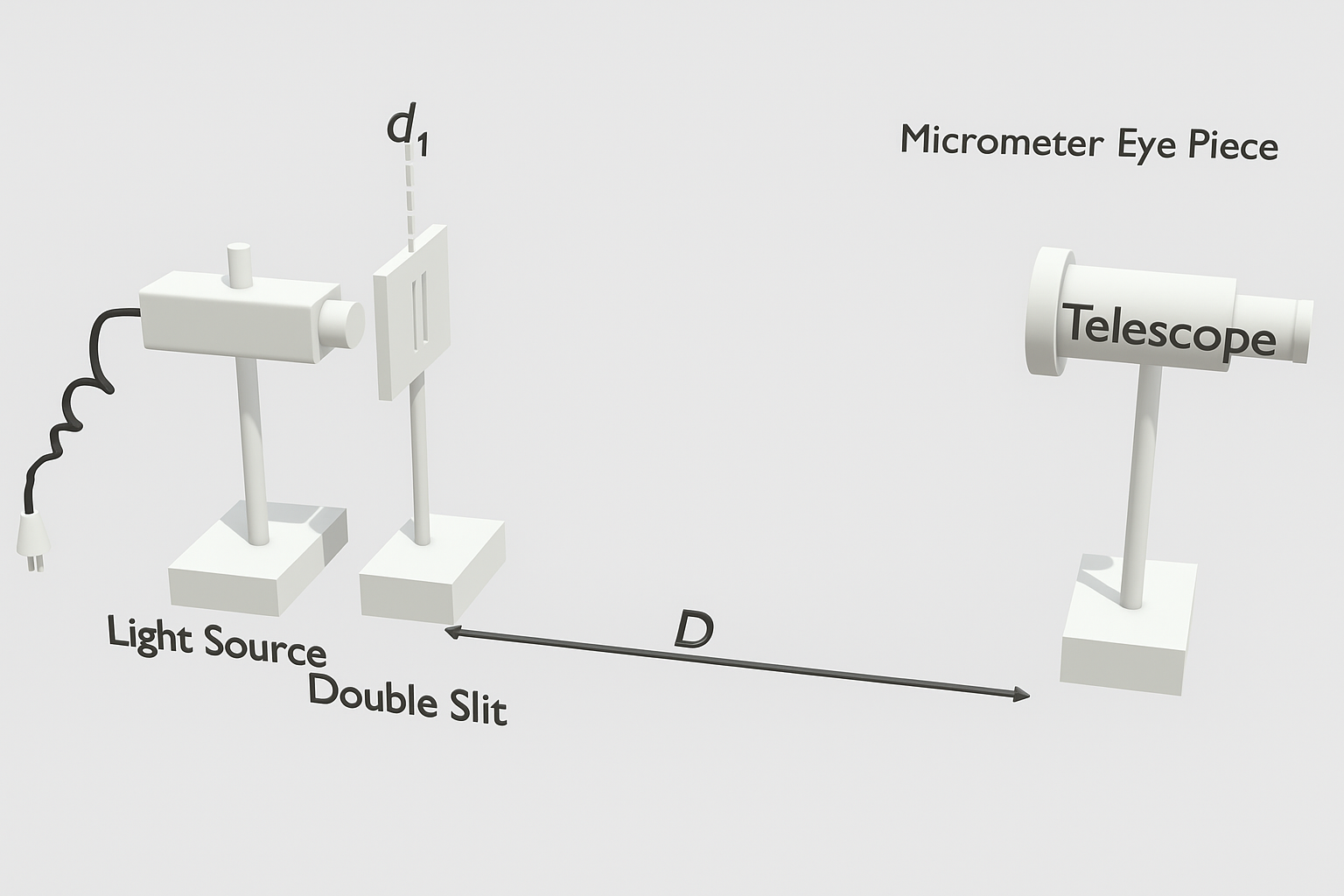To Determine the Resolving Power of Telescope
1 Aim
To determine the Resolving Power of a given telescope using Rayleigh's criterion and to verify the theoretical relationship between resolving power, wavelength of light, and aperture of the telescope.
2 Apparatus Used
(Astronomical telescope with known aperture)
(With known slit separation)
(Monochromatic source, λ = 589.3 nm)
(For observing interference pattern)
(For distance measurements)
(For measuring small dimensions)
3 Diagram

Experimental Setup
4 Theory
The resolving power of an optical instrument is its ability to distinguish between two closely spaced objects. For a telescope, this is governed by the diffraction of light at the objective lens or mirror.
According to Rayleigh's criterion, two point sources are just resolved when the central maximum of the diffraction pattern of one source coincides with the first minimum of the diffraction pattern of the other source.
For a circular aperture (telescope objective), the angular resolution is given by the Rayleigh criterion. The resolving power is defined as the reciprocal of the minimum angular separation that can be resolved.
When observing two closely spaced slits through a telescope, the slits will appear just resolved when their angular separation equals the theoretical limit of resolution of the telescope.
5 Formula
Where:
θ = Angular resolution (radians)
λ = Wavelength of light (m)
D = Diameter of telescope aperture (m)
d = Slit separation (m)
L = Distance between slits and telescope (m)
R.P. = Resolving Power
6 Procedure
7 Observation Table
Given:
Wavelength of sodium light (λ) = 589.3 × 10⁻⁹ m
Slit separation (d) = _____ mm = _____ × 10⁻³ m
| S.No. | Aperture Diameter D (mm) |
Distance for Just Resolution L (m) |
Angular Resolution θ = d/L (rad) |
Theoretical θ 1.22λ/D (rad) |
Resolving Power R.P. = D/(1.22λ) |
% Error |
|---|---|---|---|---|---|---|
| 1 | ||||||
| 2 | ||||||
| 3 | ||||||
| 4 | ||||||
| 5 |
8 Calculations
Given:
D = _____ mm = _____ × 10⁻³ m
L = _____ m
d = _____ × 10⁻³ m
λ = 589.3 × 10⁻⁹ m
9 Result
1. The resolving power of the given telescope is found to be ____________.
2. The experimental values of angular resolution are in good agreement with the theoretical values predicted by Rayleigh's criterion.
3. The resolving power is found to be directly proportional to the aperture diameter and inversely proportional to the wavelength of light used.
4. The average percentage error in the experiment is ______%.
